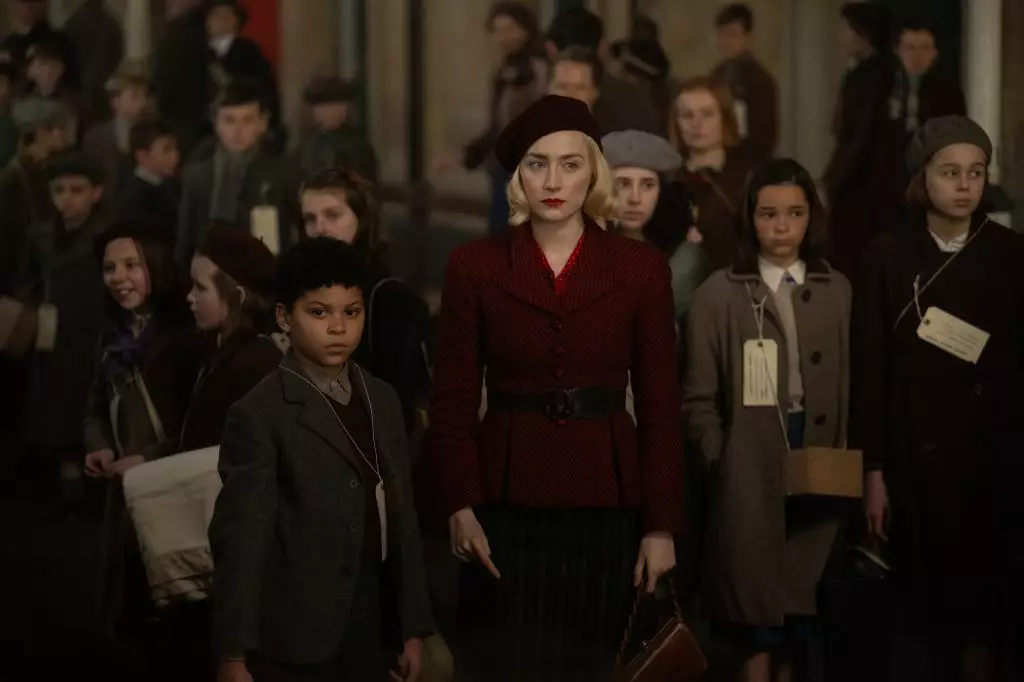The artistic journey often involves revisiting historical events, allowing for a new perspective that aims to bridge the past with the present. In “Blitz,” director Steve McQueen presents a poignant narrative set during the German airstrikes in London, bringing forth the untold struggles of a young boy witnessing the chaos of war through innocent eyes. This film, following his extensive exploration of the Nazi occupation in Amsterdam, employs a rich visual language to represent the harrowing experiences of children in wartime, thereby uncovering deeper human truths amid tragedy.
At the heart of “Blitz” is George, a biracial boy played by newcomer Elliot Heffernan. His character quickly becomes a lens through which audiences perceive the overwhelming devastation of the Blitzkrieg. Unlike many war films that focus predominantly on adult experiences, McQueen daringly anchors the narrative in George’s perspective, portraying how the tumult of war indelibly shapes a child’s understanding of safety, loss, and belonging. Through George’s journey, McQueen invites us to reflect on the innocence shattered not just by war, but also by societal issues like racism and bullying that further alienate vulnerable children.
The film opens dramatically with an intense bombing sequence, skillfully crafted to balance artistry and horror. While graphic war imagery can often desensitize viewers, McQueen opts for a more nuanced approach. This cinematic choice reflects his dedication to illustrating not only the destruction itself but also its psychological impacts, especially on young minds. The abyss of fear faced by children during such tumultuous times is compellingly encapsulated in George’s impulsive decision to escape the intended safety of the countryside train. In essence, the very act of running toward danger speaks volumes about a child’s instinctive desire to find familiarity and comfort amidst chaos.
The supporting characters, like Rita (played by Saoirse Ronan) and her father Gerald (Paul Weller), further enrich the narrative, showcasing the everyday lives and sacrifices of individuals during the war. Rita’s character vividly embodies the struggle of working mothers who juggle responsibilities while facing the relentless anxiety of not knowing whether their loved ones will return home safe. McQueen delicately intersperses these familial narratives with memories of George’s father, hinting at historical racial injustices that resonate deeply within the contemporary discourse of race and identity.
Moreover, the introduction of characters like Ife, the Black air-raid warden, adds layers to the film’s explorations of solidarity amidst suffering. Ife’s presence exemplifies community resilience, reminding us that even in the face of calamity, bonds formed through shared hardships can provide both support and solace. The decision to include characters from diverse backgrounds speaks to a more inclusive storytelling methodology, inviting dialogue on the intersectionality of race and war.
McQueen’s “Blitz” does not merely recount a historical event; it prompts introspection on the human condition, particularly reflective in modern contexts where violence and conflict still plague nations. The film’s release, juxtaposed with ongoing global crises, underscores the cyclical nature of history and the often-uncomfortable lesson that as a society, we seem to repeat the same mistakes. The emotional weight of children trapped in crisis resonates as much today as it did during the Blitz, offering a somber reminder of the past.
The cinematography of Yorick Le Saux is nothing short of spectacular, capturing the stark contrasts of London’s crumbling skyline amidst vibrant, albeit tragic, moments of human connection. The visual artistry emulates the discordance of life during the Blitz, effectively transporting the audience into that specific time and place. This, combined with a haunting score by Hans Zimmer, further elevates the emotional stakes, shaping an experience that feels both intimate and expansive.
“Blitz” transcends its historical narrative, positioning itself as a testimony to the resilience of the human spirit. The film modulates between despair and hope, echoing the need for empathy in difficult times. As audiences grapple with McQueen’s portrayal of wartime experiences, they are invited to confront not just the scars of history but also the shared humanity that persists despite them. “Blitz” challenges us to reflect on how far we have come and how far we still have to go, pushing the conversation about war, childhood, and societal responsibility into the foreground.
Through “Blitz,” McQueen has crafted a cinematic narrative that encourages not just remembrance of the past, but also a commitment to a more compassionate future. The essence of his work lingers, urging viewers to remain vigilant against the cycles of violence that history presents so starkly, and to foster a dialogue on the lasting implications these cycles have on the youngest among us.

